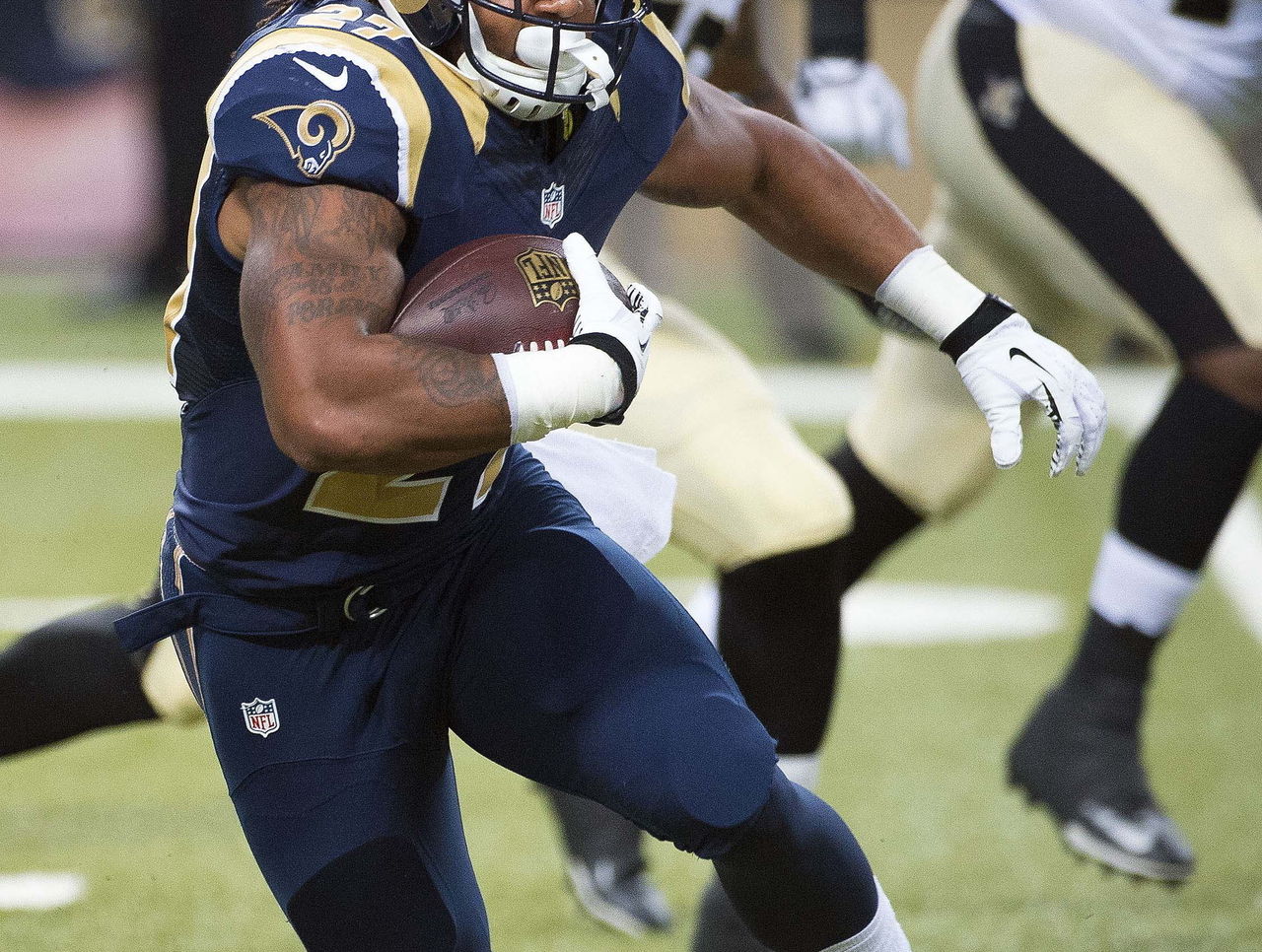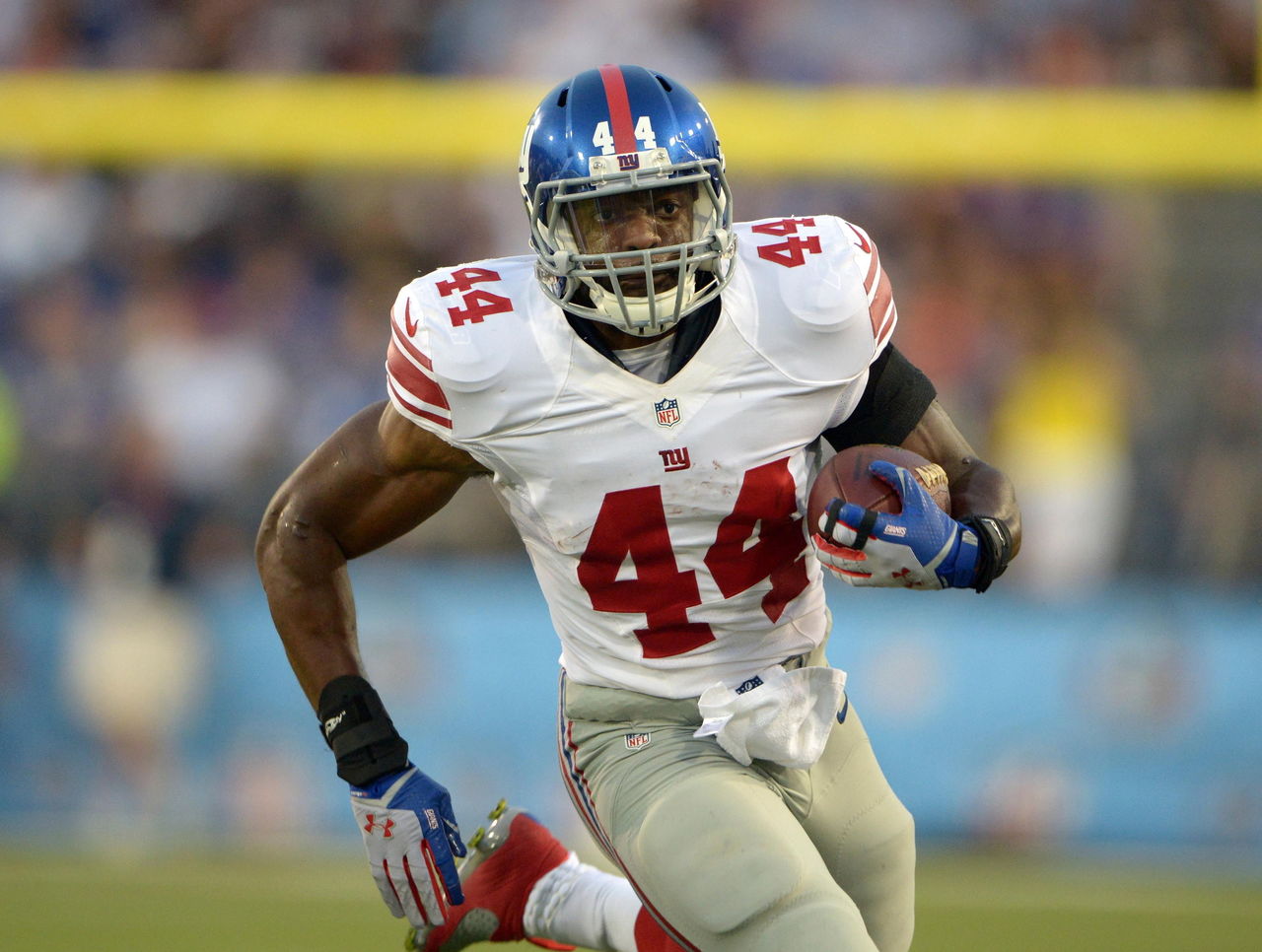Film Room: Rookie running backs finding transition to NFL difficult
It’s funny how quickly people expect you to learn everything. They have high expectations and if you don’t figure it all out immediately, they wonder if you’ll ever learn and play. That’s what rookie running backs Tre Mason and Andre Williams are dealing with right now.
Mason was drafted in the third round by the St. Louis Rams in the 2014 NFL Draft. The Rams needed a runner who could complement current starter Zac Stacy, who is a grinder, wearing defenses down four yards at a time. He’s reliable and packs a punch, but he’s not explosive. He’s no home-run hitter like Mason is.
Mason is quick, explosive and runs with style. He can burst through a hole and accelerate downfield. He also has a knack for finding the cutback lane on the back-side of the defense, where you least expect to see a glimmer of hope. Mason seems to find it routinely, but he’s still learning how to be more efficient with it.

The Rams rookie tends to stutter-stop and cut when he shouldn’t. It makes him indecisive. At Auburn, where he ran for more than 1,800 yards and 23 touchdowns in 2013, this worked because he was faster than the linebackers he played against. He could make them miss and run by them.
But in the NFL, this doesn’t work as well. Linebackers are faster across the line of scrimmage and the safeties are quicker downhill when filling allies. He’s started to learn this in the preseason, where he’s made plenty of mistakes by cutting too early or too often, or simply cutting when he shouldn’t. The following play shows his strength and weakness at once.
It’s first-and-10 against the New Orleans Saints. The offense is in I-formation, and Mason is lined up at “home.”
Mason opens left and immediately sticks his inside foot in the ground, cutting to the back-side and blowing past the defensive end. He bursts across the line of scrimmage and runs through an outstretched arm. With his shoulders squared and the first-down marker in front of him, Mason is set to bring the offense a new set of downs. He sees it and shifts his eyes outside where defenders are … and suddenly plants off of his left foot and runs directly at them.
He’s tackled a yard short of the marker.
The learning experience is not much different for Williams. Like Mason, he’s trying to get on the field and stay on it, but he has more to prove.
Williams was a surprise fourth-round pick by the New York Giants in 2014 and doesn’t offer the same kind of explosiveness. He’s a downhill runner who pounds the ball in between the tackles. In the Giants’ running back by committee, he’ll likely have to stay on the field by way of pass protection, which he’s still learning.
Pass blocking is the most difficult part of transitioning to the NFL, which every running back (including Mason, who has struggled with it) has trouble with. But it can be learned through recognition of defensive blitz schemes and fronts.
What makes it hard is there are a multitude of blitzes coming from every direction. Running backs are unsure of where to look and who to block.
In college, they mostly picked up the end man on the line of scrimmage, which was usually a linebacker. Some call this B.O.B (back-on-blocker) blocking. It’s simple compared to what pro coaches ask from them, as seen in the first preseason game against the Pittsburgh Steelers.

It's second-and-9 and Williams is offset to the quarterback’s left, scanning the defense. The Steelers are showing A-gap pressure, and they’re rotating their safeties before the snap. To Williams’ left, the strong safety is slowly rotating down.
The strong safety diagonally shoots across the line of scrimmage, passing the back-side pulling guard and running in Williams’ direction.
Williams is watching the middle of the field, however. He’s in no-man’s land. Lost. The A-gap pressure has evaporated, and there’s no one blitzing from the middle or the far side of the formation. But to his left, the strong safety is incoming and Williams doesn’t see him.
Williams finally steps up but to the middle of the pocket, creating a clear path to the quarterback for the safety. As the quarterback throws the football, the safety hits him from behind, forcing an incompletion.
Williams has the skills to become a strong pass-pro blocker. He’s tough, smart and willing. His technique isn’t always the best, as evidenced this preseason on plays where he’s dropped his head while trying to block. But like Mason, he is still learning and that’s OK.
HEADLINES
- Brady offers advice to Mahomes after ACL tear: 'One of the toughest rehabs'
- Notre Dame's Love declares for 2026 NFL Draft
- NFL Power Rankings - Week 16: Every team's unsung hero
- Fantasy: Must-add targets who can help carry you to a championship
- Packers' Jacobs says he aggravated knee injury in loss to Broncos